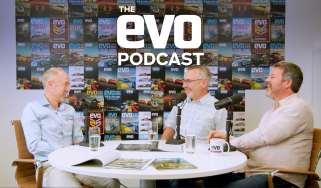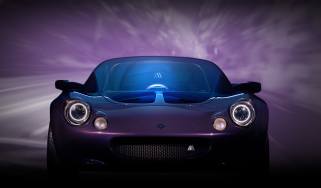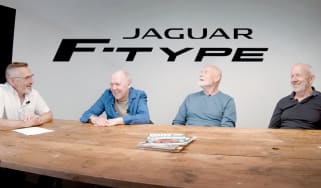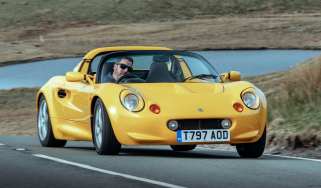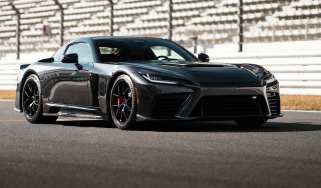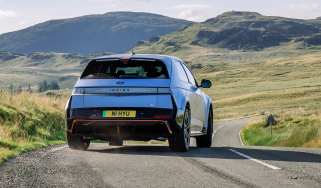The origins of the Lotus Elise with the men that made it happen
Dickie Meaden gathers together Richard Rackham, Julian Thomson and Matt Becker to discuss the genesis of one of the most important sports cars of the modern era 30 years on
Whenever I’m asked to name the most significant new car I’ve ever driven, I struggle to think of anything that has left a bigger impression on me than the S1 Elise. In the three decades since I first drove one, no other car has remained so fresh in the memory. The qualities that made it so special then are even more relevant now: the singularity of its mission, the genius of its execution, the magic that’s still bound up in the driving experience, and – sadly – what’s been lost to progress.
We knew it then, but it’s even more obvious now: the S1 Elise distilled the essence of Chapman-era Lotus into a pioneering modern sports car. One that would shape, and for some define, the careers of the many brilliant people working at Hethel.
> Used Lotus Elise (S1, 1996-2001) review – a world-beating sports car for supermini money
In this, the 30th anniversary year since the Elise was first shown, we brought together three pivotal characters in the Elise development story to record a podcast: Richard Rackham (chassis design engineer), Matt Becker (development engineer) and Julian Thomson (head of design). It was a very special conversation; one full of detailed anecdotes and vivid recollections, deep-seated affection for the project and tremendous pride at what was achieved. And all expressed with the understated modesty so typical of the bright talent to be found at Lotus in those days.
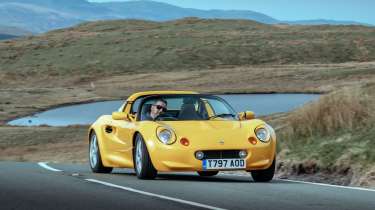
evo: Where did the idea for what became the Elise come from? Was it under GM or Romano Artioli’s ownership [1986-93 and ’93-96 respectively]? Or was it a project you wanted to do and so you just had to make the opportunity?
RR: At that time Lotus Cars wasn’t the place to work. If you wanted a career you worked for Lotus Engineering because it was the profitable bit of the business. That meant those of us still working in Lotus Cars were all diehard car nuts. We’d done the [FWD] Elan, but there was a feeling amongst the team that we should go back to basics.
JT: Artioli was very supportive of that. He wanted to get back to the spirit of the Lotus Seven.
RR: There was this project called ‘The Step In’ that I recall John Miles and Roger Becker working on. It was just in the background, but we were clearly trying to find an excuse to build a sports car.
JT: But there was no money. No business case at that time, was there?
RR: I do think that Artioli was very instrumental in his desire. I think what the Elise became was due to planets aligning because there was no money. It had to be simple. There was a great combination of influential people in the project who had the same vision. Julian and I had great mutual respect; Tony Shute – the project manager – really got lightweight stuff. There was an element of trust within the project as well because Hugh Kemp – technical director – was really behind this and introduced some new aluminium extrusion and bonding technology that Lotus had been looking at for Land Rover, but which died when BMW bought the company.
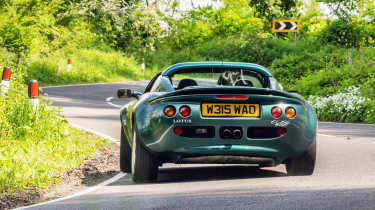
evo: So, there was very little money and Lotus Cars was on the back foot. And yet you still pursued the engineering and design of the car in a fearless way?
RR: Yes. Because if it came off, the car was going to be lightweight and affordable.
JT: Lotus had fantastic engineers, but engineers don’t always understand the design of the car. But working with Richard, I had the opportunity to really go backwards and forwards discussing the layout of the vehicle. I used to be obsessed with Road & Track magazine because they’d publish cutaway side views of cars. The proportions, the engine layout, etc. I remember working with Richard to do a side view profile of the driver, the chassis, the wheels and the engine, and putting a skin over it exactly as I wanted to.
Richard would come back to me: Where do you want the windscreen? Where do you want this? Where do you want that? Also, when we were doing sections for the interior bits and pieces, Richard would come along and say, what do you think of this? And usually they were perfect straightaway. Occasionally I’d change a radius or whatever, but he had such a good aesthetic sense as an engineer. It was very, very unusual to have that sort of collaborative nature in a car programme.
MB: Normally the design director and the engineering director are butting heads. Or trying to go in opposite directions. But the fact these two were very good friends and had this relationship meant they worked so closely together. The Elise wouldn’t have been what it became if it wasn’t for these two.
RR: The Elise isn’t perfect. Far from it. But it happened in such a short period of time and the decisions that we made were good and they enabled us to move on. With a much, much larger team, there’s all this noise going on and everyone has a different opinion, their own pride, wanting to do things their own way. Later in my career I found managing that is exhausting. It can ruin the flow of a project. The pleasure is the creativity. With Elise the creativity was uncorrupted.
JT: We were at a point in our lives where we were designing a car for ourselves. It was a car we wanted ourselves. Richard and I both had motorcycles. We weren’t good motorcyclists, but we liked that freedom and didn’t care about creature comforts – we both had healthy backs and hips at the time! And so we really were designing a car you really believed in yourself and a car you wanted yourself.
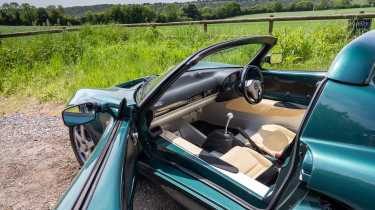
evo: Looking back on those early days, what do you think made the Elise programme so special?
RR: Well, I hadn’t experienced other car programmes. I’d only experienced ride and handling programmes to that point. So, it was the first time I’d been involved in a complete vehicle design. And, for me, of course it felt special, the whole thing. But being so young it also felt normal because when you’re doing a good job and when you’re really interested in what you’re doing, it’s kind of effortless. I don’t ever remember thinking this is really hard.
MB: I was a young junior development engineer, so it was all new to me. But as Richard said, the team atmosphere and the get-it-done mentality was so enjoyable because there was no ‘Oh, I don’t really want to work late tonight or work this weekend’ whinging. We just got on with it because we loved the job. I think for me, for my career, it taught me how much more you can do with less. If you have a really, really focused team that know what they want to do and how they want to do it, you’ll just get stuff done.
JT: Today, everyone talks about brand and brand designers and all sorts of nonsense about what a company stands for. But back then we just knew in our hearts what we were supposed to do.
RR: I was really lucky because I joined Lotus in ’87, when there were still an awful lot of people that had worked with Colin Chapman. The lightweight thing was completely ingrained. Could it be simpler? Is that part doing as many jobs as it can do? If you designed something which was missing any of those things, you would get ridiculed because everybody was so focused.
I think what set the Elise apart was it had the ethos of a low-volume, very specialist car, but it was something available to all. It wasn’t an elitist car, nor so quirky and niche that it put most people off. It had huge appeal and still does. I would love to do the next version…
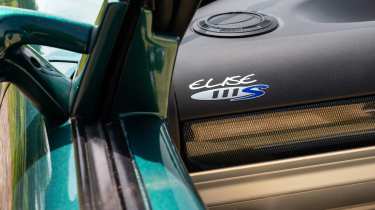
evo: Matt, you were increasingly involved in the dynamic development of the Elise as it evolved and your career progressed. Which version would you say is your favourite?
MB: Engineers always look for perfection, but the S1 Elise proves perfection isn’t always the best solution for a driver’s car. If I look at S1 to S2, yes, we made it better. The balance of the S2 was more stable, so it was easier to drive. But ask me which was my favourite it wasn’t the S2. It was the S1 because for me as a driver it was the one I had to be more respectful with. I had to drive better to extract the most from it.

